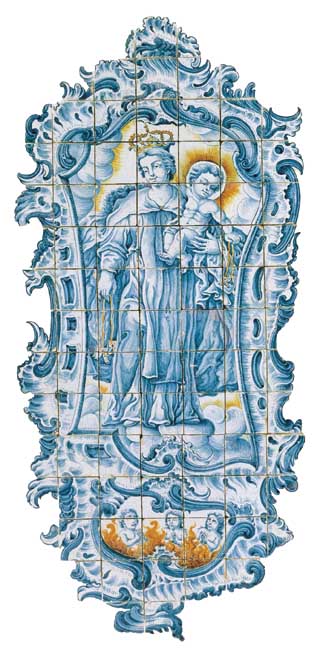 |
|
|
|
|
 |
Tiling in Portugal:
A tolerant art form ranging from exoticism to sensuality
|
 he AZULEJO is one of the distinctive elements of Portuguese culture and reveals some of its deepest sources, including: he AZULEJO is one of the distinctive elements of Portuguese culture and reveals some of its deepest sources, including:
1. The ability to dialogue with other Peoples - apparent in the Portuguese taste for exotic items in which European cultural themes mix with those of the Arab and Indian cultures, for example.
2. An expedite sense of the practical - revealed in the use of a material which is traditionally thought of as a poor relation, but which in Portugal is used as a means of aesthetically upgrading both the interiors of buildings and urban spaces as a whole.
3. A specific type of sensibility that is oriented more towards sensual values than conceptual ones, manifesting itself in a preference for a colourful material which reflects the light and for the immediate means of expression offered by the tile paintings, as well as in a choice of images that is centred on a description of reality. |
|
|
|
 |
|
|
|
Refectory of the Santa Joana Princesa Convent,
Aveiro Museum,
1st half of the XVII century.
photograph: José Rúbio (DDF-IPM)
|
|
|
|
|
Devotional panel: "Our Lady of Carmo",
Coimbra, 1770 · 1780,
MNA cat. 6111.
photograph: José Pessoa (DDF-IPM)
|
|
|
|
 |
|
 |
|
|
The frontispiece of an altar,
1st half of the XVII century,
MNA cat. 133.
photograph: Francisco Matias (DDF-IPM)
|
|
|
|
|
"The Hatmaker's tale",
c. 1800, MNA cat. 227f.
photograph: (DDF-IPM)
|
|
|
|
© Instituto Camões, 2000
|
|
|
|
|
|
|
|
|
|
|
|
|
|
|